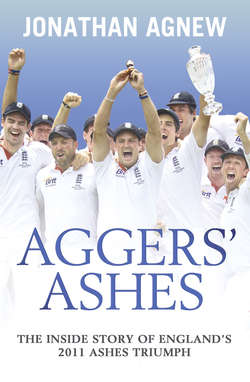Читать книгу Aggers’ Ashes - Jonathan Agnew, Jonathan Agnew - Страница 6
ОглавлениеPreface
For an England cricket correspondent, an Ashes tour of Australia should be as good as it gets – the pinnacle of one’s career. It is a wonderful country with plenty to keep you occupied and, despite the traditional semi-serious Pom-bashing by the media, a genuinely warm welcome is guaranteed. Comfortable hotels and easy travel make it difficult to argue against this being the best job in the world. But, and it is a big but, for the past twenty years the cricket has been anything but competitive, inevitably robbing each of my last five tours of the continent of its key ingredient. I have witnessed England winning only 3 of the 25 Tests they played in Australia during that time, and losing, sometimes quite badly, 18 of them.
It has not always been easy reporting on those disastrous campaigns. My emotions would typically range from initial disbelief – how can England be this bad again? – through anger at the team’s continuing ineptitude to ultimate despair. It has been impossible for me to be entirely impartial as I am sure many TMS listeners will understand. Commentating on the local Australian Broadcasting Corporation [ABC] – something I have always loved doing, incidentally – had become embarrassing, as time and time again I would invariably have to sign off with an apology to the Australian listeners for the gulf between the two teams, a gulf that created such one-sided Test matches.
But buoyed by England winning the Ashes in 2009, and having watched Australia struggle against Pakistan the following summer, the Ashes tour of 2010/11 from the outset felt altogether different. Without players of Australia’s golden age of the 1990s like Shane Warne, Glenn McGrath and Adam Gilchrist, I was not alone in feeling genuinely optimistic about England’s prospects this time around. So much so, that when pressed for a prediction before the players left home, I put my neck on the block and forecast that England would return 3-1 winners. And so it proved.
Jonathan Agnew, February 2011
